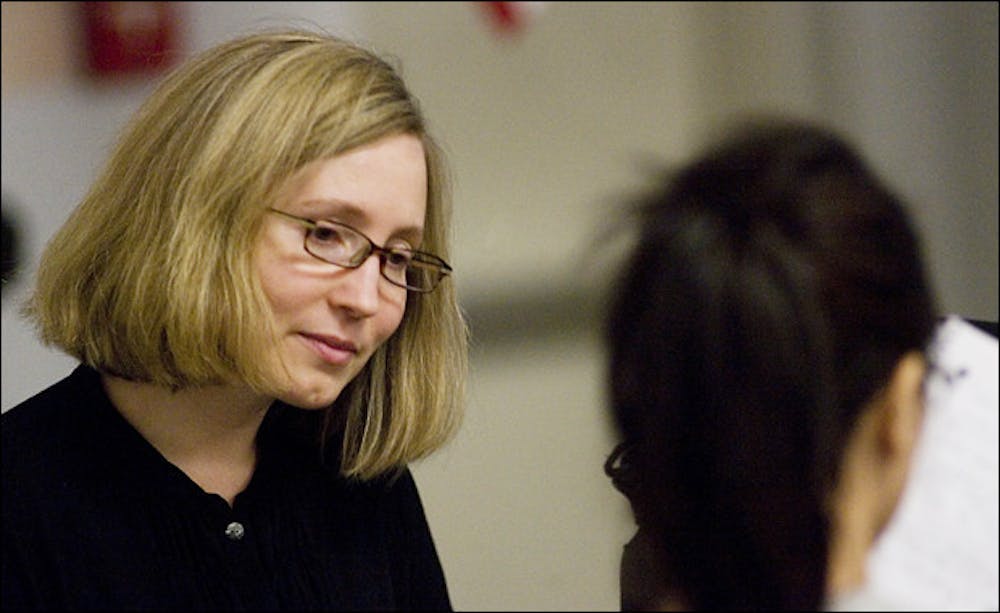Some say do as the Romans do, but one ASU professor wants to know what ancient Andes cultures did.
Kelly Knudson, a professor in ASU’s School of Human Evolution and Social Change, decided to branch out from traditional discussions on ancient Greek and Roman cultures and explore ancient life in South America Thursday at the Tempe campus’s Life Sciences Center.
Knudson said she decided to give the lecture, titled “Ancient Andean States through Biochemistry and Bioarchaeology,” because the Andes is an area of the world not widely studied in academics.
“The American Institute of Archeology has traditionally focused on the old world Greece and Rome,” Knudson said. “This lecture is a nice way to introduce the audience to civilizations outside the Mediterranean and outside of what people have heard about.”
Specifically, Knudson examined the rise and fall of different Andean empires, such as the Inca Empire and the Middle Horizon Tiwanaku polity of southern Peru, western Bolivia and northern Chile. Her analysis derives from data gathered by bioarchaeology, biogeochemistry and other archaeological data.
Knudson defined bioarcheologists as people who study human remains like teeth and bones. In her research, Knudson uses bones and teeth to study migration patterns.
The ancient Andean states and empires are ideal for studying political integration and understanding the formation and collapse of states and empires. This is because the dry climate in the Andes preserves artifacts, providing a rich archeological record of the area, Knudson said.
“I think that because we in the U.S. come from a political culture that’s based on Greek and Roman governments, it’s healthy and beneficial to look outside of that and see how different cultures organized their governments,” Knudson said.
She said the major difference between the two forms of government is the way people are ruled. In the Andes, rule is based on family groups and dual leaders, as opposed to one central ruler or empire.
Economics senior Lucas Trengove said he came to the lecture for extra credit but enjoyed it.
“It’s always interesting to find out about new people,” Trengove said. “I had no idea that the Tiwanaku were even an empire.”
Trengove said he was especially interested in the artwork and artifacts Knudson presented in her slideshow.
“I thought some of the artwork she showed was really beautiful,” Trengrove said. “The snuffbox she showed was really exquisite looking.”
The lecture, the last in a series sponsored by the American Institute of Archeology, attracted more than 100 people, primarily students.
Tom Morton, president of the Central Arizona Society of the Archeological Institute of America, said the lectures are a good way for students to realize there are different ways for them to study past cultures.
“The beauty of archeology is that we can have people in anthropology, in art history, in the field or in the classroom,” Morton said. “We draw people from many disciplines to work in archeology. It’s a universal study.”
Reach the reporter at lauren.gambino@asu.edu.




